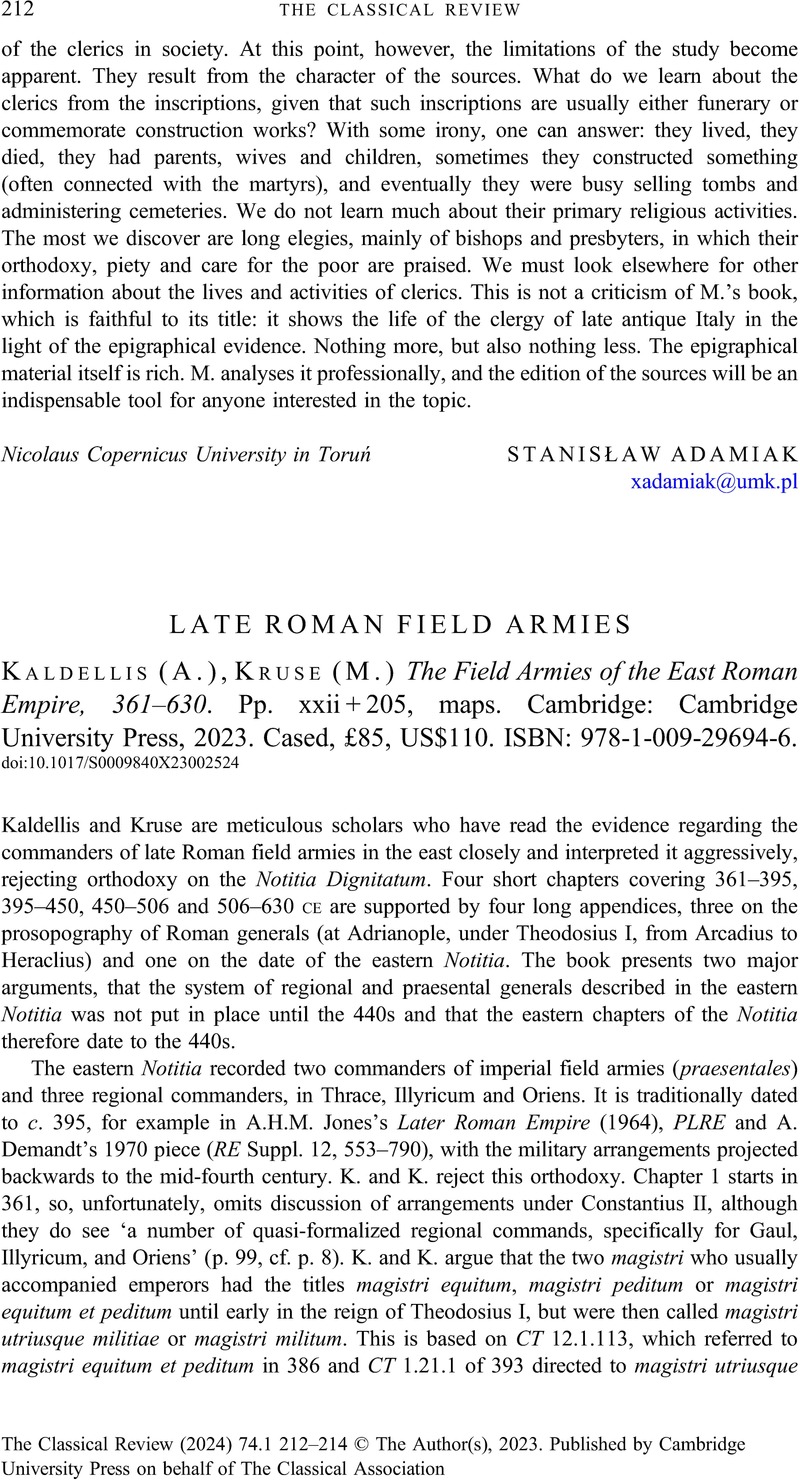No CrossRef data available.
Article contents
LATE ROMAN FIELD ARMIES - (A.) Kaldellis, (M.) Kruse The Field Armies of the East Roman Empire, 361–630. Pp. xxii + 205, maps. Cambridge: Cambridge University Press, 2023. Cased, £85, US$110. ISBN: 978-1-009-29694-6.
Review products
(A.) Kaldellis, (M.) Kruse The Field Armies of the East Roman Empire, 361–630. Pp. xxii + 205, maps. Cambridge: Cambridge University Press, 2023. Cased, £85, US$110. ISBN: 978-1-009-29694-6.
Published online by Cambridge University Press: 27 December 2023
Abstract
An abstract is not available for this content so a preview has been provided. Please use the Get access link above for information on how to access this content.

- Type
- Reviews
- Information
- Copyright
- Copyright © The Author(s), 2023. Published by Cambridge University Press on behalf of The Classical Association



